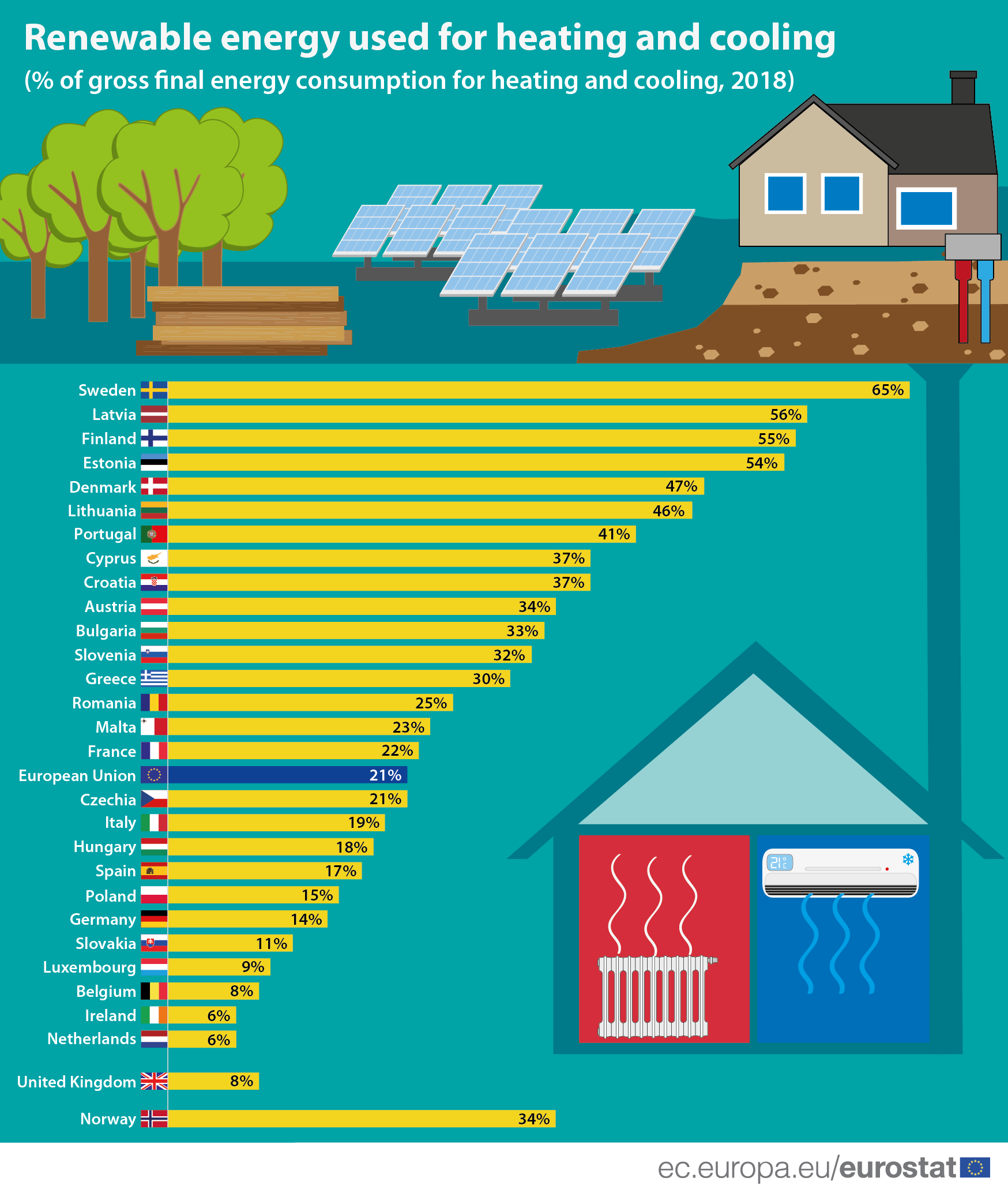In 2018, renewable energy accounted for 21% of the total energy used for heating and cooling in the European Union (EU). This share has increased steadily since the beginning of the data collection in 2004, when the share was 12%. Increases in industry, services and households have all contributed to the growth in renewable energy used for heating and cooling.
Sweden stood out among EU Member States with almost two thirds (65%) of the energy used for heating and cooling in 2018 stemming from renewable sources. More than half of the energy used for heating and cooling came from renewable energy sources in Latvia (56%), Finland (55%) and Estonia (54%).
In contrast, renewable sources contributed the least to heating and cooling in Ireland and the Netherlands (both 6%), Belgium (8%) and Luxembourg (9%).
Data source: nrg_ind_ren
Renewable energy also includes derived heat and heat energy (from air, ground or water) captured by heat pumps (this information is not yet available from all countries). In 2018, such heat energy contributed more than one quarter (27%) of the energy from renewable sources used for heating and cooling.
For more information on the statistics available in this area, take a look at the overview of energy statistics.
Note: The European Union (EU) includes 27 EU Member States. The United Kingdom left the European Union on 31 January 2020. Further information is published here.
To contact us, please visit our User Support page.
For press queries, please contact our Media Support.


